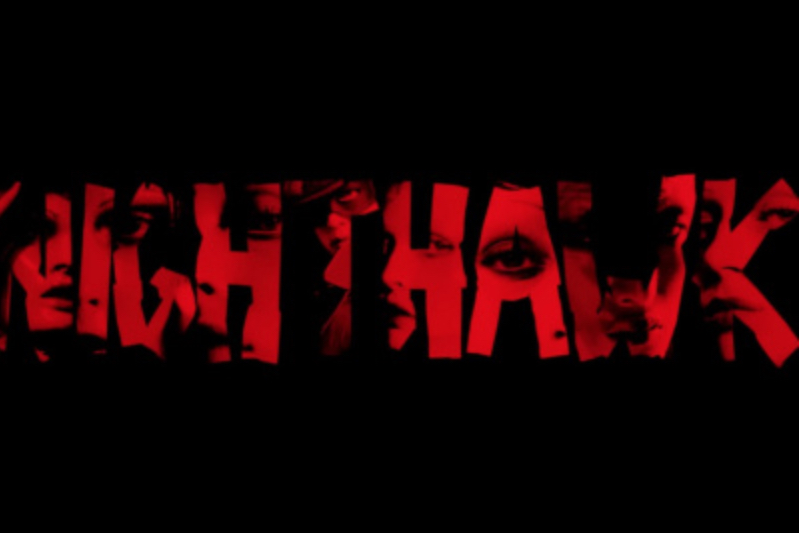John Galliano’s tenure at Maison Margiela has been a constant exercise in subversion, pushing the boundaries of fashion and defying the expectations of couture with a provocative blend of high-art aesthetics and raw, unsettling narratives. Nighthawk, a documentary that delves into his most recent collection for the house, captures this spirit of defiance and creativity with an intimate exploration of what some have termed “horrific couture.” The film, which offers a behind-the-scenes look at the conceptual underpinnings, creative process, and final runway presentation of Galliano’s collection, reveals a world where fashion is not merely a display of beauty, but a platform for confronting fears, emotions, and the darker facets of the human condition.
This critical explication will unpack the layers of Nighthawk, exploring how Galliano’s collection and the film itself challenge the conventions of couture, the role of the designer as both creator and provocateur, and the cultural implications of showcasing beauty through the lens of horror. By tracing the thematic and visual elements that define the collection, we can better understand Galliano’s vision and its broader impact on the fashion industry and beyond.
The Concept: Horror as High Fashion
The term “horrific couture” may seem like an oxymoron, but under Galliano’s direction, it becomes a powerful form of expression. In Nighthawk, the designer explains his fascination with horror, noting how it provides a stark contrast to the conventional prettiness of couture, thus offering a new avenue for storytelling. The collection draws on a range of unsettling themes: from decay and fragmentation to disfigurement and transformation. It is both a homage to classic horror tropes and a critique of the fashion industry’s obsession with perfection.
Galliano’s choice to embrace horror is not arbitrary. In fashion, horror and beauty often exist in opposition, yet the former has a long-standing tradition of disrupting norms and forcing viewers to confront what they find uncomfortable or taboo. By weaving horror into his collection, Galliano effectively destabilizes the viewer’s expectations, asking them to reconsider their relationship with fashion and aesthetics. In Nighthawk, this thematic exploration is juxtaposed with Galliano’s calm, almost serene narration, which lends a surreal quality to the creative process, making the eerie beauty of the collection feel all the more unsettling.
The documentary captures Galliano’s thought process as he draws inspiration from literary sources, films, and historical references. Gothic literature, German Expressionist cinema, and the works of Francis Bacon all seem to echo through the collection’s silhouettes and textures. Galliano’s garments are intentionally distorted, with exaggerated proportions, asymmetrical cuts, and distressed fabrics that evoke a sense of the uncanny. Models are draped in voluminous cloaks and shrouds that obscure their figures, turning them into abstract, almost monstrous shapes.
Visual Elements: The Art of Disfigurement
The visual language of the collection is one of disfigurement and decay, but it is executed with the meticulous craftsmanship that defines haute couture. Nighthawk provides close-ups of the garments, revealing painstakingly hand-stitched details, intricate beadwork, and complex layering techniques that transform each piece into a wearable sculpture. The use of unconventional materials—such as shredded tulle, tarnished metallic threads, and painted latex—further emphasizes the collection’s rejection of traditional notions of luxury and refinement.
One particularly striking piece features a bodice constructed from fractured mirror fragments, each piece jagged and reflective, symbolizing the fractured nature of identity and the self. As light hits the garment, the reflections dance across the room, creating a disorienting visual effect that mirrors the psychological disquiet of the collection. The mirrors, sharp and potentially dangerous, evoke a sense of threat, reminding the viewer that beauty can be perilous and painful.
The models themselves become part of the spectacle, their faces obscured by masks and headdresses that draw inspiration from medieval armor, surgical instruments, and horror film iconography. Their movements are deliberate and slow, as if weighed down by the heaviness of the garments and the narrative they embody. This performative aspect of the show, documented in Nighthawk, heightens the tension between beauty and fear, seduction and repulsion.
Galliano’s Approach: Deconstruction as Creation
Deconstruction is a recurring motif in Galliano’s work, and in this collection, it takes on a literal form. Many garments are intentionally left unfinished, with seams exposed, fabrics fraying, and linings turned inside out. This technique, often associated with Margiela’s house codes, serves as a metaphor for revealing what is typically hidden—whether it be the inner workings of a garment or the darker aspects of the human psyche.
In “Nighthawk”, Galliano describes his use of deconstruction as a means of stripping away illusions. “Couture often masks reality,” he says, “but what if we could reveal the truth beneath? The flaws, the fears, the insecurities?” This question drives the collection’s aesthetic, which blurs the line between construction and destruction, creation and disintegration. The garments seem to be in a state of flux, caught between coming together and falling apart, much like the themes of identity and transformation that Galliano explores.
This deconstructive approach is not merely about aesthetic experimentation; it is a form of critique. Galliano is challenging the very premise of couture as an untouchable art form, exposing its vulnerabilities and imperfections. By doing so, he also challenges the audience to confront their own perceptions of beauty and value. In a world obsessed with surface-level perfection, Galliano’s work is a reminder that true artistry lies in the willingness to embrace imperfection.
Impression
By marrying horror with haute couture, Galliano is engaging in a dialogue about the role of fashion as a reflection of societal anxieties and desires. Horror, as a genre, has always been a vessel for exploring taboo subjects—death, violence, sexuality, and the abject. Through the lens of horror, Galliano critiques the fashion industry’s treatment of these subjects, particularly its fetishization of youth and beauty, its erasure of aging and decay, and its tendency to gloss over uncomfortable truths.
In Nighthawk, Galliano uses horror not merely for shock value, but as a means of exploring these cultural issues. The collection’s emphasis on disfigurement and fragmentation speaks to a broader societal fear of the “other”—that which is different, marginalized, or grotesque. By elevating these elements to the realm of couture, Galliano forces the viewer to confront their own biases and discomforts. The collection becomes a space where ugliness is not only acknowledged but celebrated, where fear is transformed into beauty.
The documentary also highlights the reactions of the audience, many of whom are visibly uneasy or contemplative as they take in the collection. This response is precisely what Galliano aims to provoke. He wants his work to resonate on a visceral level, to disturb and challenge, rather than to simply please. In this way, Nighthawk serves as both a documentation of a fashion show and a psychological study of its impact.
The Role of the Designer: Galliano as Provocateur and Visionary
John Galliano’s role at Margiela has always been that of a provocateur. His collections are not meant to be safe or easily digestible; they are designed to provoke thought and emotion. In Nighthawk, we see Galliano at his most introspective, reflecting on his own artistic journey and the themes that continue to drive his work. He speaks candidly about his fascination with the grotesque, his love of narrative, and his desire to push the boundaries of what fashion can be.
Galliano’s approach to fashion as a form of storytelling is evident in the way he constructs his collections. Each piece is not just a garment but a character, a symbol, a fragment of a larger narrative. In Nighthawk, we see how he meticulously crafts these characters, using clothing to express ideas and emotions that words cannot convey. It is this commitment to narrative that sets Galliano apart as a designer, making his collections feel more like theatrical performances than traditional runway shows.
No comments yet.







